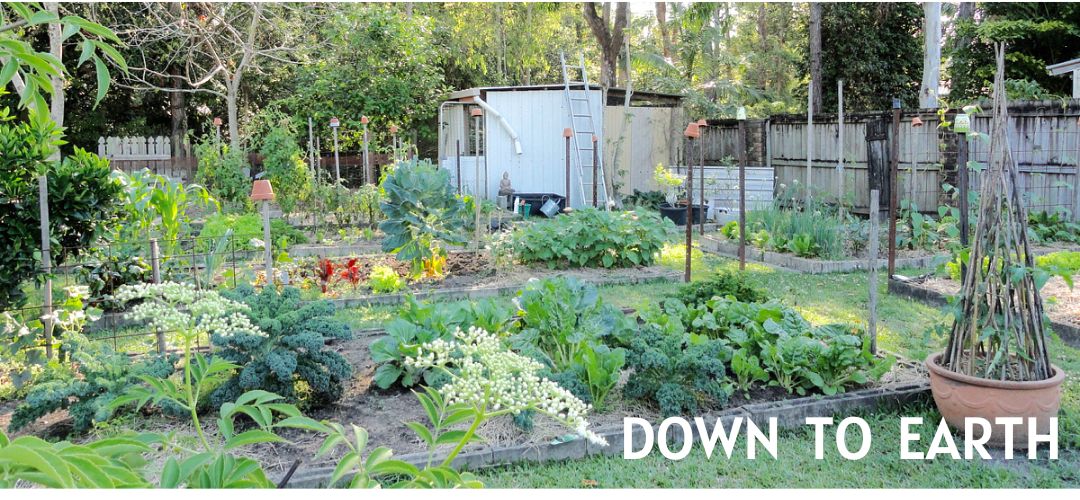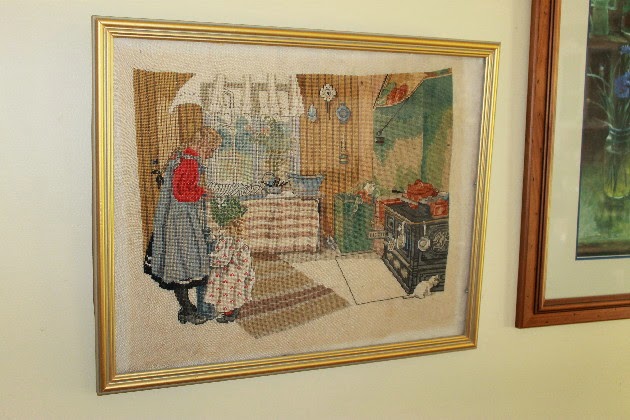I've been thinking a lot about wabi-sabi this year. If you've never heard of the term, it's a Japanese concept about being comfortable with imperfection. I'm very close friends with imperfection and have been all my life but as I grow older, I see it in almost everything I do and in all the beauty that surrounds me - including my family and grand sons. Nothing is perfect and it seems to me that if you strive for perfection, you'll be disappointed more often than not. I don't want to spend time being disappointed when I can just as easily be accepting and even look for wabi-sabi and celebrate it, just like the Japanese do.
The kitchen on my wall.
The kitchen - a print of the original.
A friend of mine, Gerri, who lives in France and who I met through this blog, sent me a petit point tapestry of Carl Larsson's The Kitchen. Carl Larsson was a Swedish painter (1853 - 1919) and is a favourite of mine, has been since I discovered him when I lived in Germany many years ago. The Kitchen is the depiction of a young girl with a toddler, possibly her sister, in their Swedish kitchen. The older girl is churning butter and the little one is watching her, possibly knowing that one day it will be her job to do that for the family. On the sideline a wood stove holds simmering soup pots, a tiny white cat is almost out of sight, the washing up sits beside a wash bowl and the curtain blows softly in the breeze. And it is that curtain that gets me every time. Little things.
When Gerri sent it to me she said it had been sitting on the wall in her kitchen for many years and now she wanted me to have it. She explained she'd never finished it and if I wanted to, to go ahead. Well, I didn't want to finish it off because to me, it held the history of Gerri and her kitchen just the way it was. I wanted the tapestry to be what it was, not what it was supposed to be. It was more interesting to me as an artefact the way it was. It now hangs on my kitchen wall. Authenticity framed, captured under glass, a wabi-sabi masterpiece. A reminder.
Also in that frame I placed a letter from Gerri, in an envelop with French stamps, and a tiny note on the back of the frame asking: "do you know what this is? Blog 21 August 2014" I suspect that when I die, my family will go through all these things and I hope they'll discover what it is and keep it as their own reminder.
Also in that frame I placed a letter from Gerri, in an envelop with French stamps, and a tiny note on the back of the frame asking: "do you know what this is? Blog 21 August 2014" I suspect that when I die, my family will go through all these things and I hope they'll discover what it is and keep it as their own reminder.
In her wonderfully descriptive explanation of Wabi-sabi - the art of imperfection, Robyn Griggs Lawrence, says:
Broadly, wabi-sabi is everything that today’s sleek, mass-produced, technology-saturated culture isn’t. It’s flea markets, not shopping malls; aged wood, not swank floor coverings; one single morning glory, not a dozen red roses. Wabi-sabi understands the tender, raw beauty of a gray December landscape and the aching elegance of an abandoned building or shed. It celebrates cracks and crevices and rot and all the other marks that time and weather and use leave behind. To discover wabi-sabi is to see the singular beauty in something that may first look decrepit and ugly.
Wabi-sabi reminds us that we are all transient beings on this planet—that our bodies, as well as the material world around us, are in the process of returning to dust. Nature’s cycles of growth, decay, and erosion are embodied in frayed edges, rust, liver spots. Through wabi-sabi, we learn to embrace both the glory and the melancholy found in these marks of passing time.
I guess that says it all and also reminds me why I've been thinking about it more as I age. I think that when I die I'll be a case study in wabi-sabi. And I have to tell you I'd rather go out as a frayed edged, grey haired, spectacled, wabi-sabi grandma than anything else. It comforts me knowing that the history of things, and of people, plays an significant part in what we are and who we become.


